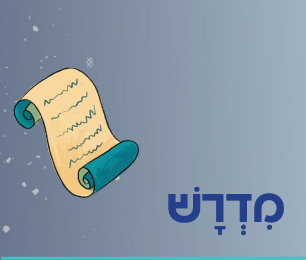Ilustration Credit: Rebecca Kerzner

Midrash מִדְרָשׁ
Our parashah gives the recipe for the קְטֹרֶת (ketoret, incense) that was burned in the מִשְׁכָּן (Mishkan, sanctuary for God in the wilderness). What can we learn from the different spices that make up the ketoret?
Here’s one lesson, about the ingredient called חֶלְבְּנָה (helbenah).
אָמַר רַב חָנָא בַּר בִּזְנָא אָמַר רַבִּי שִׁמְעוֹן חֲסִידָא: כׇּל תַּעֲנִית שֶׁאֵין בָּהּ מִפּוֹשְׁעֵי יִשְׂרָאֵל אֵינָהּ תַּעֲנִית, שֶׁהֲרֵי חֶלְבְּנָה רֵיחָהּ רַע וּמְנָאָהּ הַכָּתוּב עִם סַמְמָנֵי קְטֹרֶת.
Rav Hana bar Bizna says that R. Shimon Hasida says: Any communal fast that does not include sinners from the Jewish people is not actually a fast. We know this because helbenah, which has a bad smell, is listed in the Torah among the ingredients of the ketoret.
According to this, when helbenah is burned on its own, it produces a bad smell. But it was included in the ketoret in the Mishkan anyhow!
You might be surprised that the ketoret recipe includes any ingredients that smell bad. But R. Shimon Hasida explains that this is on purpose. Helbenah teaches us that, in our communities, we need to include people who might seem imperfect, even if they sin. If we try to create communities without those people, our prayers and fasts won’t work.
- Why would fasts and prayers not be successful without including everyone? What do we gain by including sinners?
- What does this midrash teach us about community?
- When is it sometimes hard to include people, and what can you do to include them?
-------------------
-------------------





